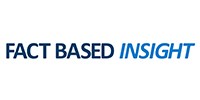FACTBASEDINSIGHT: Quantum Internet Outlook: Part Two

(FactBasedInsight:QuantumInternet) Welcome back to the Quantum Technology Outlook 2020 guest series provided to IQT by Dr. David Shaw. Today’s article is Part Two of the Quantum Internet Outlook.
The Quantum Internet
In the long term, the outcome of this battle may depend on the path taken elsewhere in the wider quantum technology sector. The EU Quantum Flagship has now articulated its own vision ‘to build the Quantum Internet in Europe’ as a long term 20-25 year goal that unifies the overall programme [72].
The familiarity of these individual words should not obscure how radical a vision this is. Quantum states are very different to conventional data.
When we network conventional computers their combined power scales linearly;
… when we entangle networked quantum computers their power scales exponentially [2].Whenever we network two remote locations we create a security vulnerability;
… when we use coherent quantum links we have inherent security [73].When we outsource sensitive business calculations we must trust our cloud service provider;
… when we use quantum links we can perform ‘blind’ computing with zero overhead [80].When we network n conventional sensors their fidelity scales as √n;
… when we entangle n quantum sensors, and if we can defeat loss and noise, their fidelity scales as n [81].
China is also pursuing this goal. Speaking in Shanghai, Zhao Yong (President, QuantumCTek) said “Though the quantum communication industry is still in infancy, its potential is being increasingly recognised. We are preparing for a take-off in the near future.”
To watch in 2020
NIST Round 3 – Expect the PQC candidate algorithms selected for round 3 to be announced May/June. Evaluations will run 2020-21. Expect issues such as performance and IP rights to come to the fore.
Patent EP 2537284 – Via CRNS, the French government owns a patent that broadly impacts many attractive ‘small key’ code-based and lattice-based PQC protocols. Will NIST and CRNS cut a deal to remove any economic impediment to the adoption of such solutions?
Structured Lattice-Based crypto – A strength of the NIST process is the diversity of PQC approaches it continues to consider. However only the ‘structured’ lattice-based protocols have the combination of performance and signature/key size that promise a measure of ‘drop-in’ compatibility with existing Internet protocols. Some worry the additional ‘structure’ in these lattices is also a potential security vulnerability. Watch out for angst over how to address these concerns.
Randomness in the market – Expect new QRNG devices from players such as KETS, CQC, Bra-Ket and others. These will seek to compete with established offerings from IDQ, QuintessenceLabs and QuantumCTek on cost, bitrate and compliance with an increasingly dizzying array of standards. The current generation of devices don’t offer a device-independent model of randomness, so device-specific assurance testing will be required. Expect entropy.
Standards vs standards – Early quantum safe adopters will want systems that meet recognised standards. Watch out for the continuing work from both industry-led bodies such as ETSI, and government-led bodies such as ITU-T and ISO. Expect growing tension. Already China, the US and Russia all want to ‘co-chair’ the new ITU-T focus group on quantum information technology.
Satellite QKD missions – A successful conclusion to the current SpooQy-1 mission will be a milestone in de-risking future missions such as the QKD Cubesat planned for 2021. Other QKD related missions due to launch in 2020 include NanoBob (France) and QUBE (Germany). Watch space become increasingly central to wider plans for this technology.
2nd generation QKD on the map – Current deployments use 1st generation DV QKD systems. Research is hotting up on the next generation of the technology. Demonstrations already show promise for CV QKD, TF QKD, MDI QKD and more advanced entanglement based approaches. Most commercial devices are probably still 2-3 years away. Will QuintessenceLabs be the first to market with a CV QKD based system?
UK Quantum Comms Hub – Phase 2 of the UK programme is expected to continue work on the UK Quantum Network, ‘consumer QKD’ standards and assurance, while adding new themes in CV QKD, entanglement, components and multiple complementary cubesat missions. Watch out for hybrid technologies that merge PQC and QKD.
Lawful intercept in Europe – Views differ as to whether governmental authorities, where lawfully authorised, should be able to intercept and read private communications. Current QKD trusted node technology bakes in this possibility, but research groups around the world are working to overcome this current technical limitation. Expect initiatives such as QCI to bring European views on this to a head. Will the EU seek to set another international data-law precedent?
NCSC on Quantum Safe Cryptography – Will the highly respected UK NCSC issue updated guidance on quantum safe cryptography? Its previous advice now dates from long ago in 2016 when it was heavily critical of QKD and cautioned on premature transition to new algorithms. We can expect it to remain cautious, but the nuances of any new advice will be picked-over by potential early adopters both in the UK and more widely.
US NQI 5-year strategic plan – The US was a pioneer of early QKD before moving its focus onto PQC. The scope of the NQI very much includes quantum communications. The 5-year strategic plan is due out by March. What emphasis will it put on QKD?
QuantumCTek IPO – This leading quantum startup plans to raise $43m in an initial public offering on the Shanghai stock exchange. This is set to make it the first listed pure-play quantum technology company anywhere in world. No Western capitalists have yet grown so bold.
























